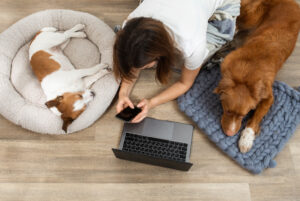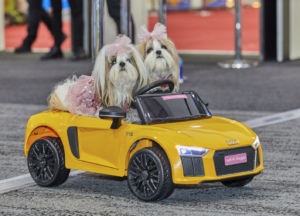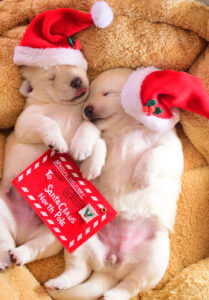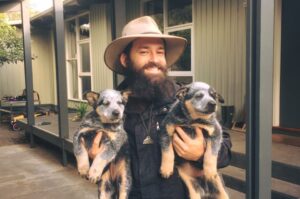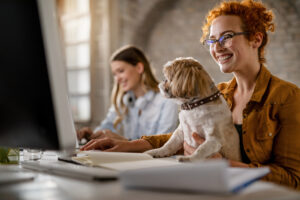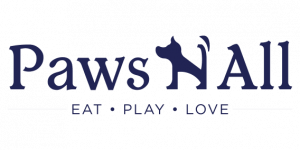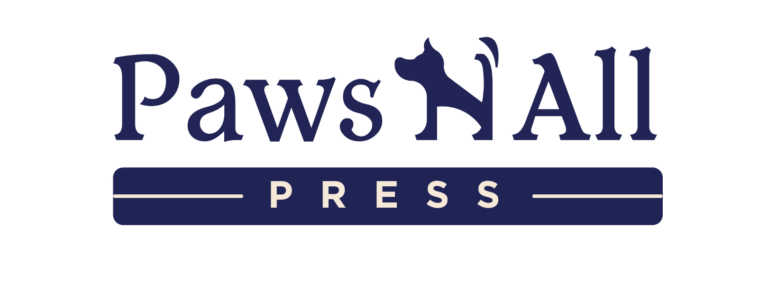Congratulations and hi-5 to the best parents your pup and bub could ask for!
You’ve successfully mastered the art of being the best pet parent imaginable. But the introduction of a tiny human into your carefully trained world can throw even the best of us into a spiral!
The arrival of a new baby will bring with him or her (or perhaps them if it’s twins or more!) a million wonderful emotions. It is also a time of sleepless nights and unknown stressors. That’s why it’s important all family members are considered before and during this change so that no one is left isolated, unattended or afraid.
It’s natural to worry about how dogs and babies will get along when they first meet one another. Even some of the most well-trained dogs may feel uncomfortable when a new baby is brought into their environment without proper preparation.
In the lead up to your newborn’s arrival, teach your dog some simple boundaries and commands to help them bond with the baby and reduce everyone’s anxiety before you bring your newborn home.
Before baby’s arrival
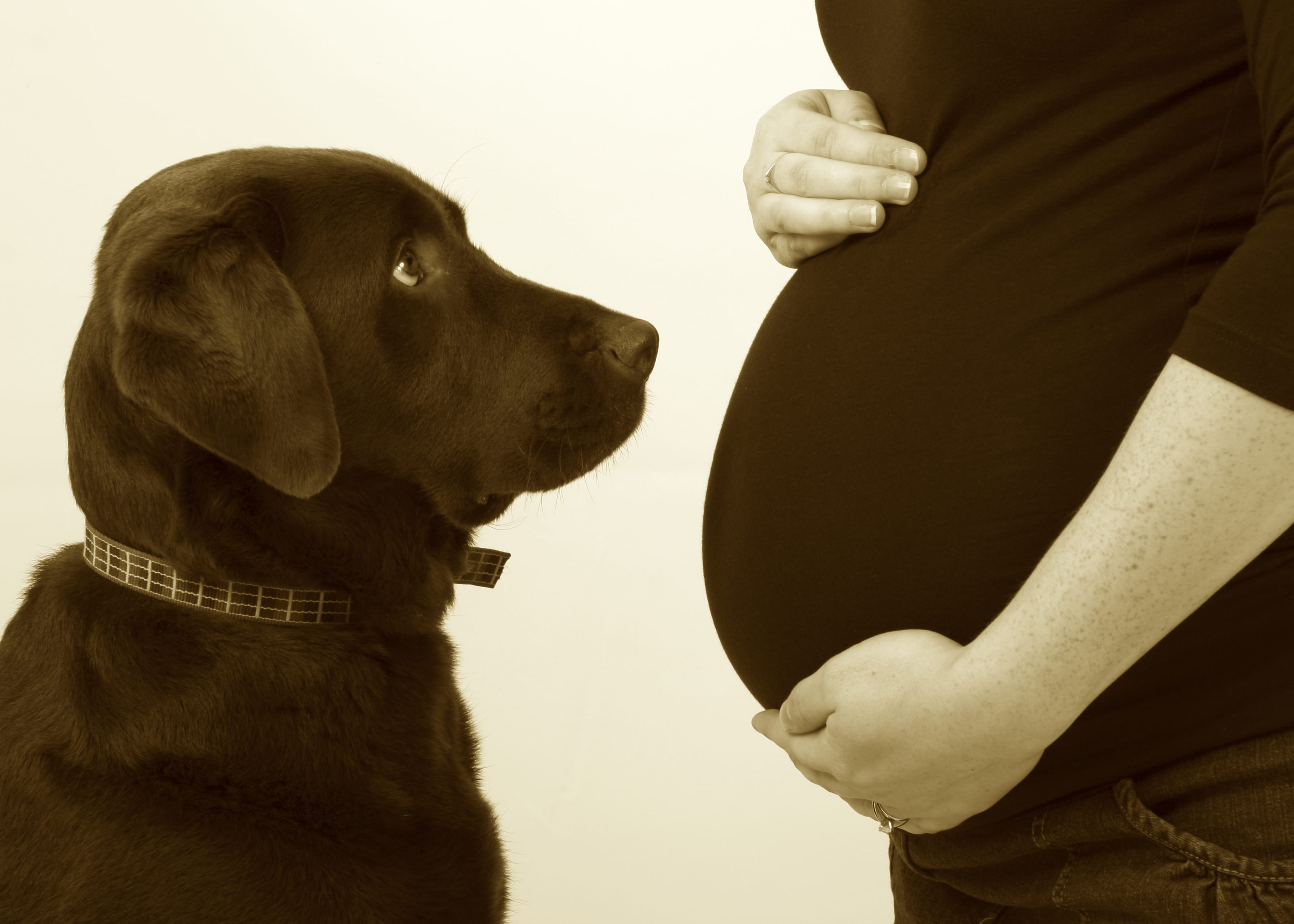
- Introduce baby items such as toys, blankets, high chairs, car seats and machines that make all sorts movements and noises. This will help your pup learn that these new items are safe and won’t hurt them.
- Teach your pooch the command “Away!” and reward with tasty treats. It’s important to foster positive commands rather than yelling.
- Practice walking on the lead with your dog with an empty stroller, so they learn to walk carefully and safely beside you before there is a baby inside.
- If your dog is a known talker, try to limit the times they can access stimuli that could encourage barking behaviour (such as windows, garden areas or sensitive sounds) and offer alternative entertainment, such as toys or ball time. Continue this once the baby is home.
- Set “off limits” boundaries before the baby comes home if you do not want your pup going into, say, the nursery. If you try to suddenly restrict your dog from places they were previously allowed, it could upset them and make them feel resentful. Your dog must understand they need permission to go into that room well before the baby is home, so they don’t associate bub’s arrival with new restrictions.
First meeting between dogs and babies
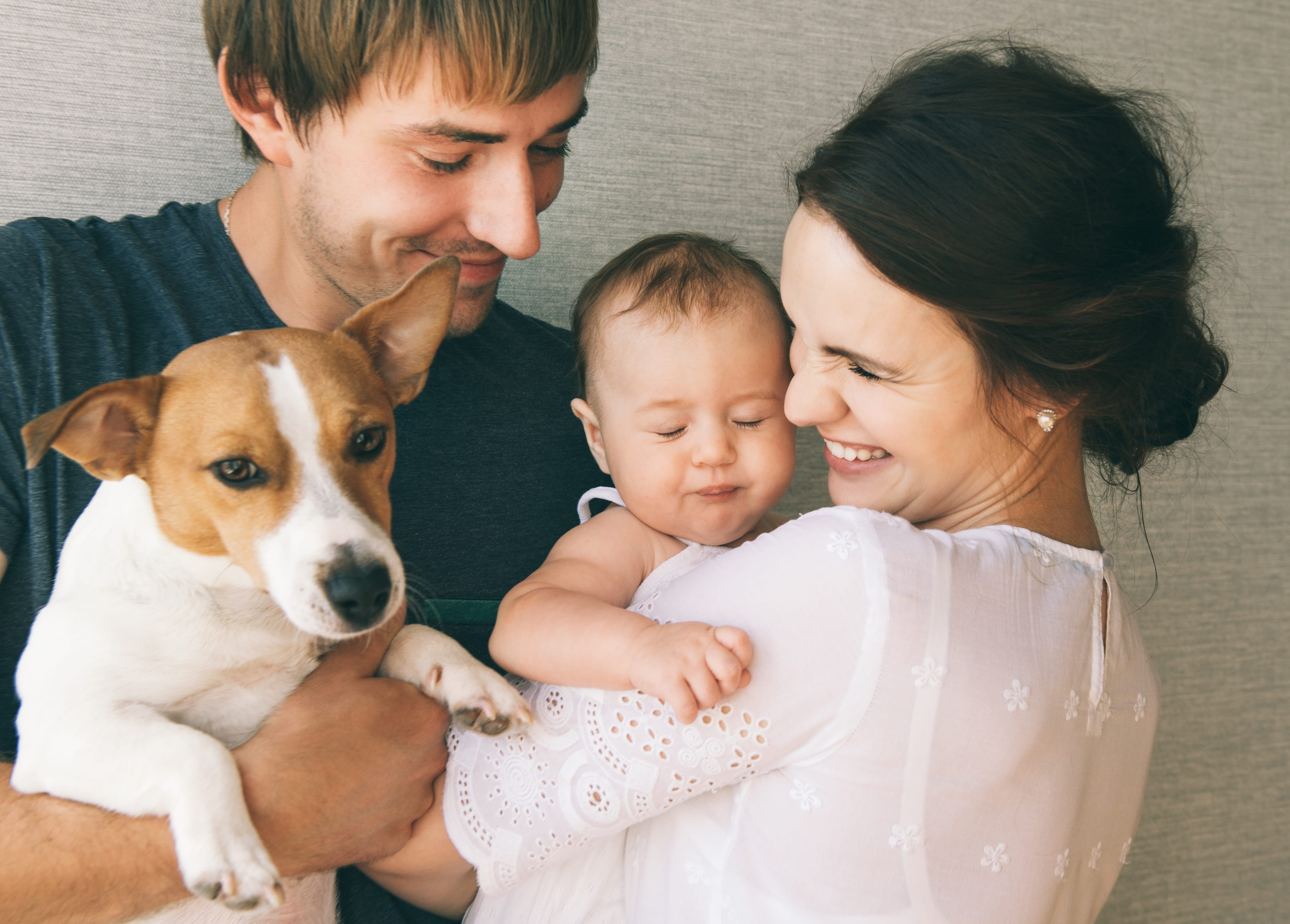
- Offer a new toy to your pup when the baby comes home so that they feel appreciated. Play with your dog and the toy whilst the baby is in the room. It is imperative that your pup doesn’t feel left out or neglected once you have a new addition to the family. A monthly care box will help you spoil your pup – and will turn up even when you have sleep-deprived brain fog!
- Keep your fur baby’s meal times on the same schedule. It may be hard with strange sleep patterns and long nights to remember to feed your pup at the same time each day. But dogs are creatures of habit, so their routine should have minimal change to avoid anxiety and/or disruptive behaviour.
- Retain a consistent walkies schedule. Have hubby walk your pup during feed times or together take him on walks around the block with your newborn in the pram. If you need an extra hand, enlist the help of some family or friends whom your dog already trusts to take them on extra walks or park visits.
- If your fur baby already attends puppy school or day care, keep that schedule up! It will give you a much-needed break and also keep your dog in their normal routine and maintain their social activity.
- If possible, bring your baby blanket home from the hospital so that your dog can sniff it and get familiar with the baby’s scent.
- Baby’s sleep time should be quiet time for everyone, including your dog. So encourage your dog to take naps when the baby sleeps.
Baby’s arrival during COVID-19
During these strange COVID times, some of these steps may not be possible with hospital and visitor restrictions (such as bringing home baby’s blanket). As an alternative to introducing dogs and babies, you could try:
- Asking a family or friend to walk your dog before they meet the baby, so they are well exercised and calm.
- Greeting your dog at your front door before bringing the baby inside. Have dad fetch the dog, cuddle them and carry them out to meet the newest family member.
- Keep the pup on a leash for the introduction so there is a firm barrier between them and baby.
- Allow your dog to carefully sniff the baby – starting with the feet. Try to avoid face contact, especially during their first meet-and-greet. If the baby suddenly screams, that can be scary for a dog, so it’s important to let him/her sniff the babies feet only, then be asked to come away and sit. Give your pup lots of encouragement and a treat for their gentle behaviour.)
Ensuring dogs and babies both get love and attention
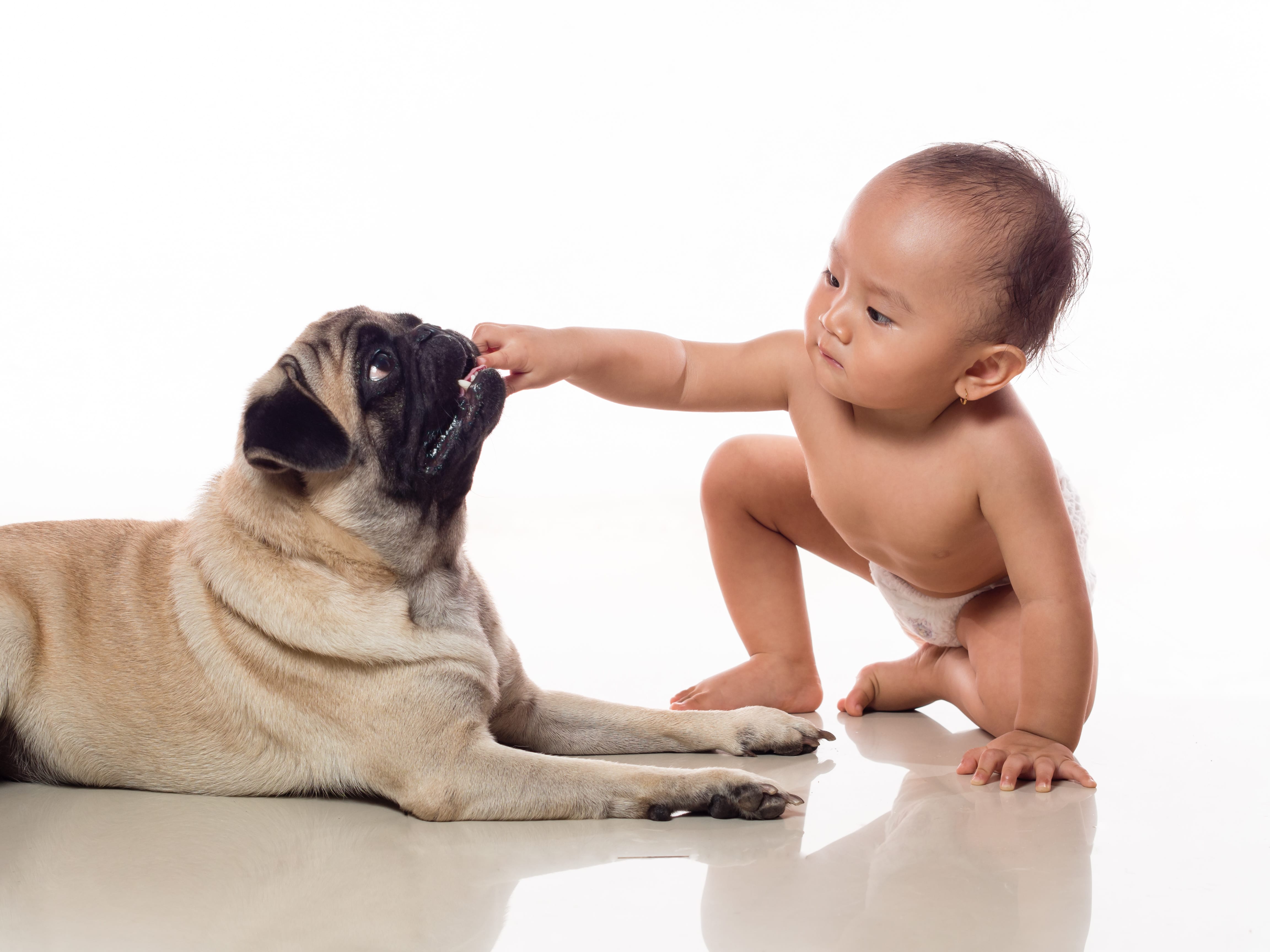
As loving parents, you don’t need to choose between your dog and your newborn baby. The most important thing you can do for them both is to be well prepared.
If you think that giving your pup loads of extra attention before the baby arrives to make up for a lack thereof once your bundle of joy comes home, think again! It’s much better to try and acclimatise your dog prior to the birth, so that they don’t equate the new baby’s arrival as the reason their usual 2-hour walks are now only 20 minutes!
Give your dog loads of attention (and treats!) when the baby is awake, not asleep. You want your dog to be happy the baby is up and active, rather than thinking they get all the love when the baby is not around.
Dogs can be unpredictable, so even if you have the gentlest of pooches, you still need to understand their language when having them near your newborn. Almost all dogs will exhibit a warning sign of aggression before biting or attacking. So get yourself well-versed in your dog’s mannerisms and learn their dog language.
Foster a healthy relationship by teaching your dog to respect your baby and vise versa. This means teaching your child not to pull your dog’s tail, ears or be “ruff” with them. Dogs will show signs of stress by panting, looking away, drooping their tail between their legs or nipping at a child if they feel scared.
Remember: It’s not the dog’s fault if they react to your child’s behaviour differently to how you’d like. It’s your responsibility as pet parents to know and read your dog’s cues, and nurture a healthy relationship between all family members. Arm yourself with as much knowledge and training as possible. And always always always have a stash of treats on hand!



